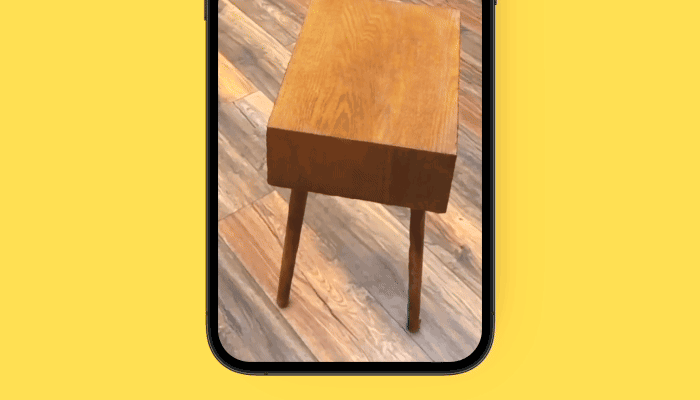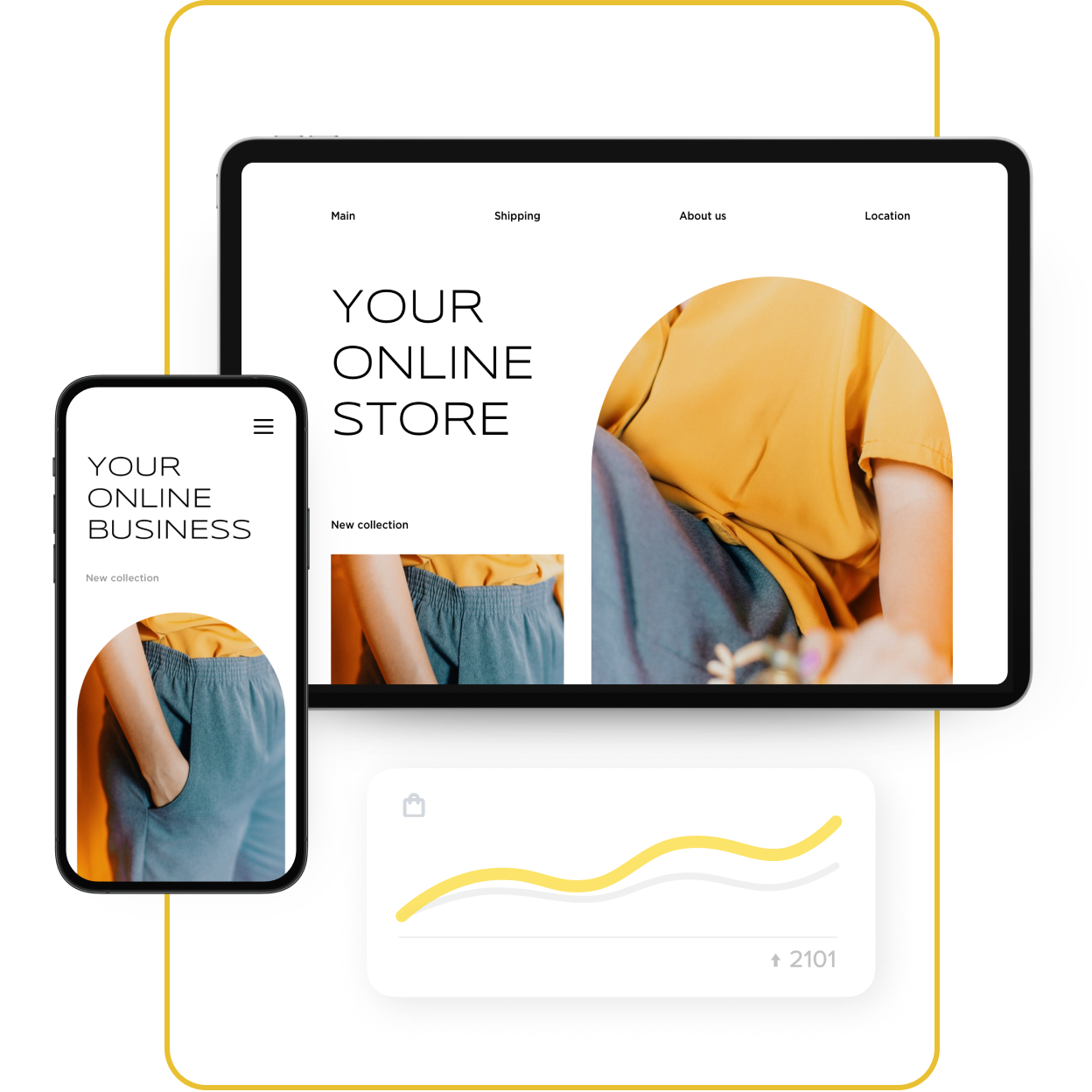Ecommerce has expanded heavily over the past several years. In fact, the global ecommerce retail sales are expected to hit approximately 8.1 trillion dollars by 2028. This growing market opens significant opportunities for those currently in the ecommerce business and those looking to enter it.
However, with more businesses now involved in ecommerce, each business needs to build a competitive edge to stand out from the crowd. One such way to capitalize on the growing market is by focusing on user experience (UX) and user interface (UI) design.
Continue reading below to learn more about ecommerce UX and UI and how to use them effectively in the market.
What Is UI and UX?
First, it’s important to understand what UI and UX mean in the context of ecommerce.
UX is an acronym for User Experience. It refers to a customer’s interaction with a website or product, focusing on optimizing this interaction to provide a pleasant and efficient experience for the user.
In ecommerce, UX could include aspects like navigability, accessibility, easy checkout, and intuitive product information presentation.
On the other hand, UI, short for User Interface, relates to the visual aspects of a website or product. It involves designing the product’s look and feel, including the color scheme, button placement, typography, and overall layout. When done right, UI design makes the site visually appealing and easy to interact with.
What Is UI and UX Design?
UI and UX design revolves around crafting visually captivating and
This includes elements such as website layout, color schemes, typography, and other design elements that make it easy for users to navigate and interact with the site.
Both UI and UX design are crucial in creating a positive impression for potential customers.
What Is the Difference Between UI and UX?
The two terms and subjects are often confused for each other and sometimes even used interchangeably. While they may sound similar, there are some key differences between UI and UX design — they are two different subjects with unique factors and considerations.
UI is more focused on the visual aspects of a website or app, while UX focuses on the overall experience and functionality. In other words, UI is about how things look, while UX is about how things work.
For example, a visually appealing website with difficult navigation would have good UI but poor UX. On the other hand, a website with a simple design but easy navigation and fast loading speed would have good UI and UX.
In short, user experience focuses on how customers interact with a website or product. On the other hand, ecommerce UI refers to a product or site’s visual elements and design. So, while the two may address the same product or service, there will be different focuses to improve each.
Creative UX and UI Examples in Ecommerce
Now that we have a basic understanding of UX and UI, let’s look at some examples in the ecommerce world.
“Slim Your Wallet” Slider on the Belroy Website
The Australian wallet brand, Bellroy, has a cool feature called “Slim Your Wallet” on their site. By adjusting the slider, you can select how many cards you want to carry and see how the wallet sizes up against the competition. Remarkably, the Bellroy wallet maintains its slim profile as you add more cards.

Once you check it out, it’s hard not to be wowed by what Bellroy offers. This is a great example of how a UI element (in this case, a slider) can help businesses showcase their product or service in a unique and interactive way, ultimately improving the user experience.
3D Product Models in Ecwid Stores
Business owners selling online with Ecwid by Lightspeed have a unique feature that allows them to take their product presentation to the next level with the Ecwid Mobile App for iOS.
Owners of Apple Pro devices equipped with a LiDAR scanner can leverage the Ecwid Mobile App to craft and display captivating 3D models. Shoppers can virtually “try on” these models using advanced AR technology.

Customers can view a 3D model on a product details page
Providing this immersive experience gives your customers a

A 3D model of a product made with the Ecwid Mobile App
This is a great way to improve the user experience for brands selling apparel, home decor, or any other products that customers want to visualize in a more lifelike manner before hitting that buy button.
Learn more about easily creating 3D models of products for your ecommerce store:
Video on Moreporks Home Page
The website greets visitors with a captivating

Video is an excellent method to captivate shoppers, making it a smart strategy to draw attention to your products.
By the way, if you create an ecommerce website with Ecwid by Lightspeed, you can enhance any page with video sections. This can be a powerful tool for showcasing your products and creating an immersive shopping experience for your customers.

But it’s not just about showcasing your products. Videos also help create an emotional connection with your brand. By using storytelling and creative visuals, you can convey the message of your brand in a compelling way, making it more memorable for your audience.
Regimen Builder on the Ordinary Site
One of the main UX principles for ecommerce websites is making it easy for customers to find and choose products they need. Usually, it’s done with the help of filters, searches, and product categories.
The Ordinary website takes this to the next level with its Regimen Builder tool. This interactive feature allows customers to select their skin type and concerns and then suggests a personalized skincare routine using The Ordinary’s products.

This not only makes it easier for customers to find the right products for their specific needs but also adds a personal touch to the shopping experience. Customers feel cared for and their individual needs are being addressed, which can increase trust and loyalty towards your brand.
Blending Ecommerce UI and UX
There is a balance between UI and UX.
When a customer is browsing an ecommerce store, the storefront and product should have visual appeal, but they should also be easy to use.
While creating a storefront, the designer should remember that visual appeal doesn’t mean it has to be flashy and overwhelming. Too much of anything can be a
In other words, there should be a compromise to achieve a balance, and users will highly determine this. The internal team may have worked hard to design a
This doesn’t mean that the design team didn’t do a great job in creating the site; it’s just not aligned with users’ needs. Ideally, they should complement each other.
Any UI changes should ideally be made to support the UX. Remember the old adage, “The customer is always right.” Follow the
Balancing UI and UX is imperative for success. It’s not about picking one over the other — it’s about finding a synergy between both. This is addressed by understanding your customers, their needs, and their behavior on your site and making
Ecommerce UX and Ecommerce UI Design are an Ongoing Process
It is important for businesses to evaluate their UX/UI effectiveness regularly.
They should be an ongoing process rather than an update every couple of years. Continuing to monitor these factors will allow the store to continue to remain successful.
Sometimes, a change may have an adverse effect and must be rolled back. Other times, a simple change can lead to an influx of sales. Both are possible.
However, as the process continues, an ecommerce business will learn more about their customers and be able to make better changes.
Is Your Ecommerce Site UX-Friendly?
Now that we know the important factors that go into ecommerce UX design, how should a business go about improving or implementing these?
First and foremost, a thorough ecommerce UX audit should be done. This essentially means going through the current design of the site with a tooth comb to discover inefficiencies, inconsistencies, and other general issues.
You should find the parts of the site that don’t flow well, are hard to use, and more. Locate these issues by asking questions such as:
- Is it easy to search for products?
- Does the product detail page have everything to make an informed decision?
- Can the customer easily see product availability?
- Is the site easy to navigate from arrival to purchase?
- Is typography consistent across the store?
- Can the store be easily loaded on mobile devices?
The trick is to think like a customer. Consider who your customer persona is and follow the paths they would when arriving at the page. This can help to discover obstacles and difficulties throughout the store.
The Perfect Blend of UX and UI for Your Online Store
Whether you are new to the ecommerce industry or looking to enhance your existing ecommerce business, focusing on UX and UI design can be a powerful tool for building a competitive edge. It can make your brand stand out in a saturated market, promote customer satisfaction, and ultimately drive your ecommerce success.
If you want to start an ecommerce store or are already selling online, Ecwid by Lightspeed can help make the process easier while ensuring the UX and UI of your online store are
Here are some examples of how you can enhance your shoppers’ experience using Ecwid by Lightspeed as your online store:
- Use customizable website templates and
user-friendly design tools to craft an online store effortlessly, even without coding expertise. - Allow customers to explore your store’s mobile version or app for a smooth shopping experience on mobile devices.
- Enhance your store’s shopping experience with advanced tools like 3D product models where customers can view products from all angles for better purchase decisions.
- Utilize categories, filters, and search functionalities to enhance customers’ product discovery experience.
- Provide a streamlined
one-page checkout to enhance the purchasing process for customers. For added convenience, users can complete their purchase in just a few clicks using Apple or Google Pay. - Include videos on product pages to demonstrate product usage or offer tutorials.
- Offer product recommendations, tailor personalized deals according to customer behavior, and more.
Those are just some examples of optimizing the ecommerce experience for your customers by using Ecwid by Lightspeed. By implementing these features, you can attract new customers and retain existing ones by providing an easy, convenient, and interactive shopping experience on any device.
Create your Ecwid account to set up a new store or migrate your existing online store to Ecwid. Explore the wide range of features and integrations to enhance your online business.
Need help getting started? Our team of experts will assist you with any questions or concerns. With Ecwid, you can focus on running your business while we handle the technical aspects of your online store.
Don’t miss out on the opportunity to increase sales and improve customer satisfaction with Ecwid by Lightspeed. Sign up now and take your ecommerce game to the next level!
- How to Fix Your Store’s Navigation
- Everything You Need to Know About Product Merchandising
- Online Merchandising: How to Layout Products in Online Store
- What is Fashion Merchandising, and Why Is It So Important?
- 10 Design Mistakes of Online Stores
- 15 Perfect Font Pairings for Your Ecommerce Website
- Color Theory: Everything You Need to Know about Color Themes
- 7 Creative Ideas for Your Ecommerce Product Page
- The Power of a Hero Image in Web Design
Must-Have UX Principles to Follow in an Online Store- Website Design Audit
- Unlocking the Power of UX Design for Ecommerce
- What’s the Difference Between UI and UX in Ecommerce?












